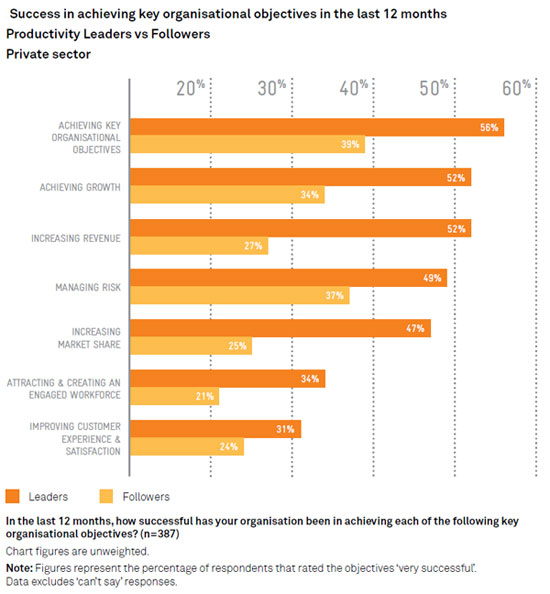By the numbers: productivity needs a push

For the last few years, Telstra has analysed productivity in Aussie businesses and found, this year, that fewer players are standout performers. Even those that see it as a priority are expecting to see fewer tangible benefits this year.
One common feature of each edition of Telstra's annual Productivity Indicator seems to be the indication that those companies that measure and track productivity (productivity leaders) seem to be those that end up increasing revenue and market share.
Yet this year, the number of those "productivity leaders" has dropped slightly (from 24 per cent of businesses down to 20 per cent). Amongst that shrinking group, those expecting to see productivity improvements this year has fallen sharply, from 74 per cent last year down to 52 per cent this year.
Why the big drop? The state of the world economy has almost certainly got a lot to do with it. In fact, given all the uncertainty, it's encouraging that more than half of productivity leaders still expect further gains this year. Other companies (productivity followers) are more pessimistic, with only 29 per cent expecting to see any sort of productivity improvement.
With a Telstra-sponsored survey, we might expect to see clear evidence that communications technology is the answer to improved productivity, but this year, that's not the case. While 49 per cent of technology decision makers see ICT as the biggest opportunity to drive improvements, the figure falls to 34 per cent for C-level managers. The C-level brigade is more concerned with process improvements (41 per cent) and staff training (39 per cent) as the top productivity drivers.

(Credit: Telstra Productivity Indicator 2012)
The Telstra research (conducted on their behalf by AMR) shows how those that see the importance of measurable productivity targets will deliver positive results across a whole range of indicators (see the above diagram). In particular, notice the quantum gap between those private-sector firms achieving revenue growth in the last 12 months — 52 per cent for innovation leaders, 27 per cent for the followers.
It's a similar outcome to the findings from ZDNet Australia's "_blank"="" class="c-regularLink" target="_blank" rel="noopener nofollow">2012 IT Priorities survey, which showed how companies investing more in ICT (with a budget increase) tend to be more oriented towards growing the business than cutting costs. Both surveys seem to indicate that having a positive outlook is perhaps a big part of the road to success.